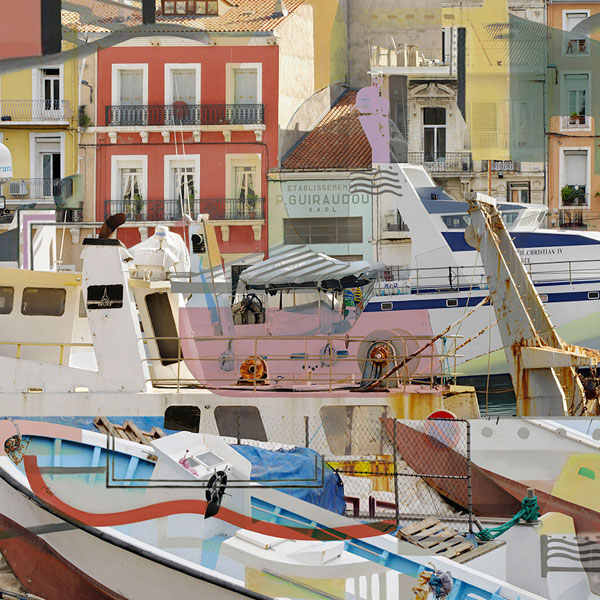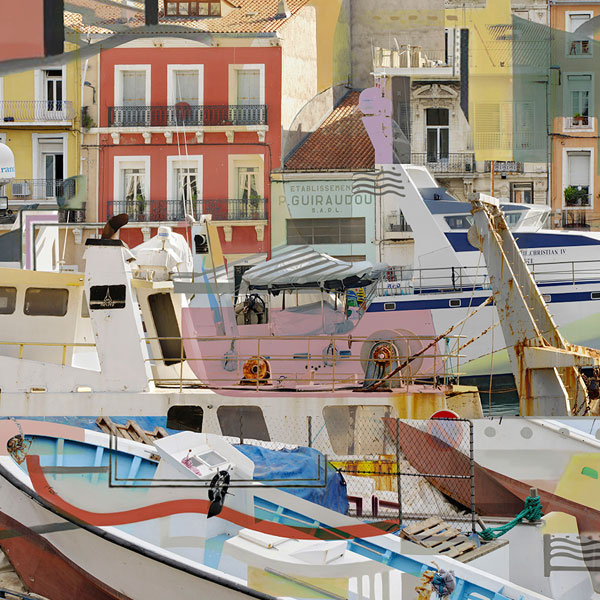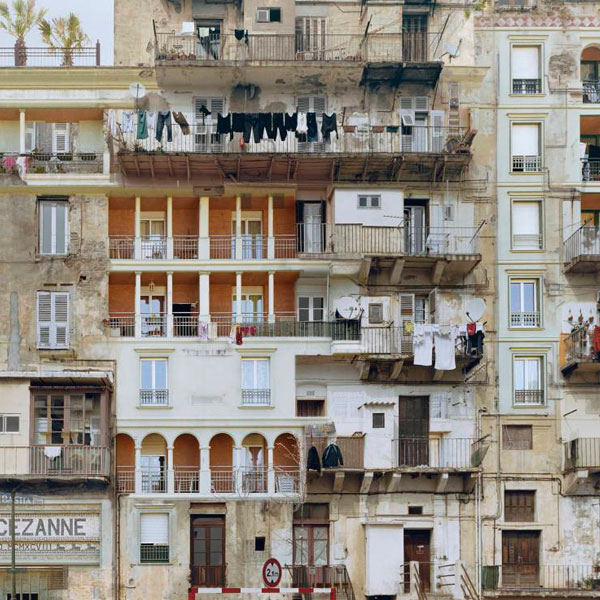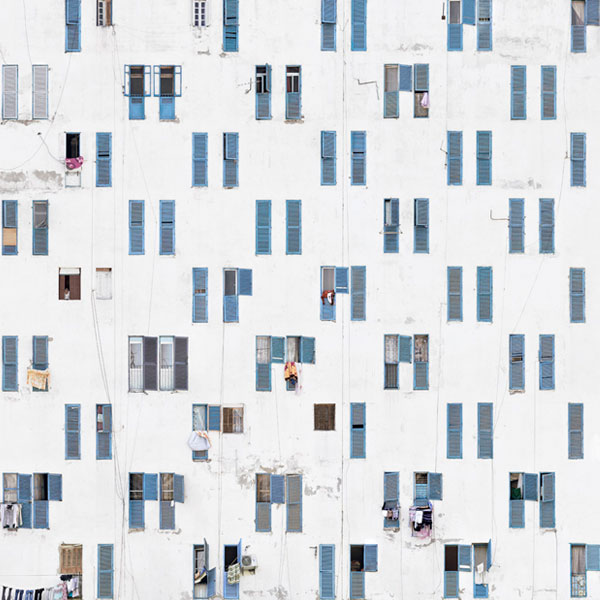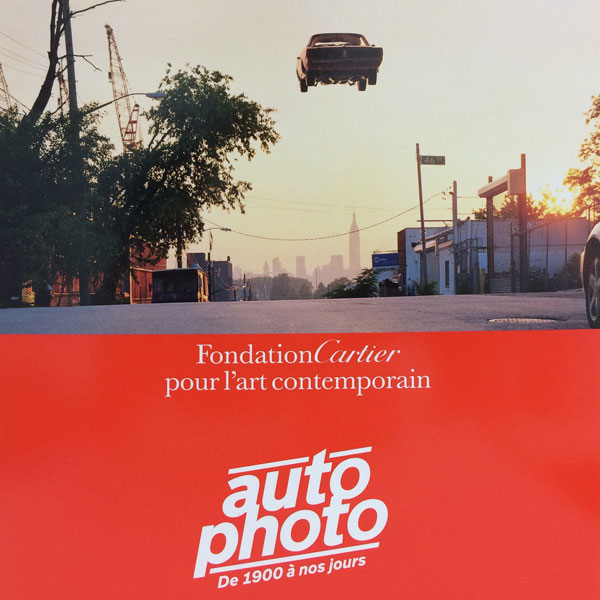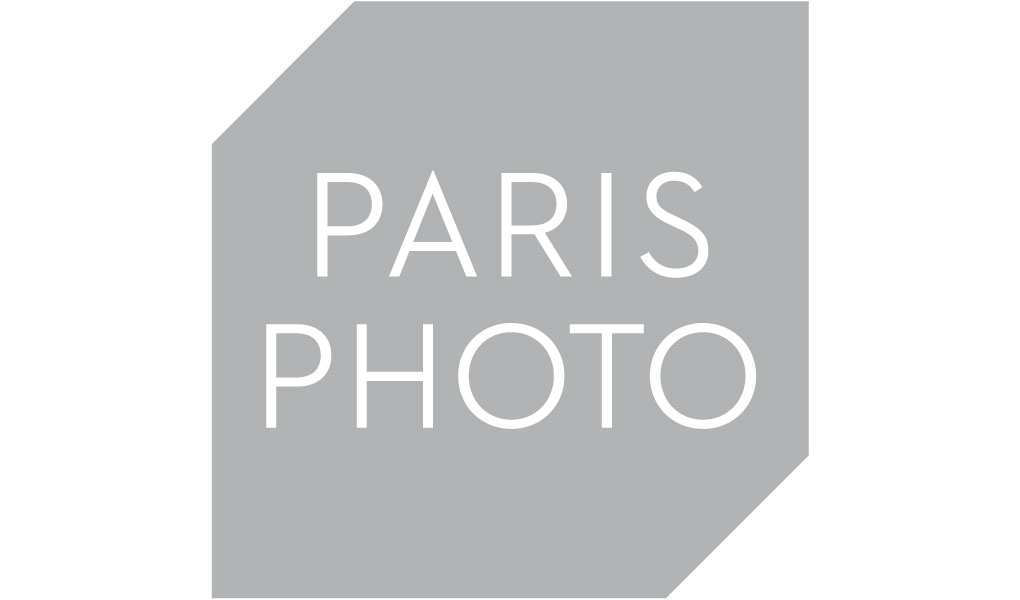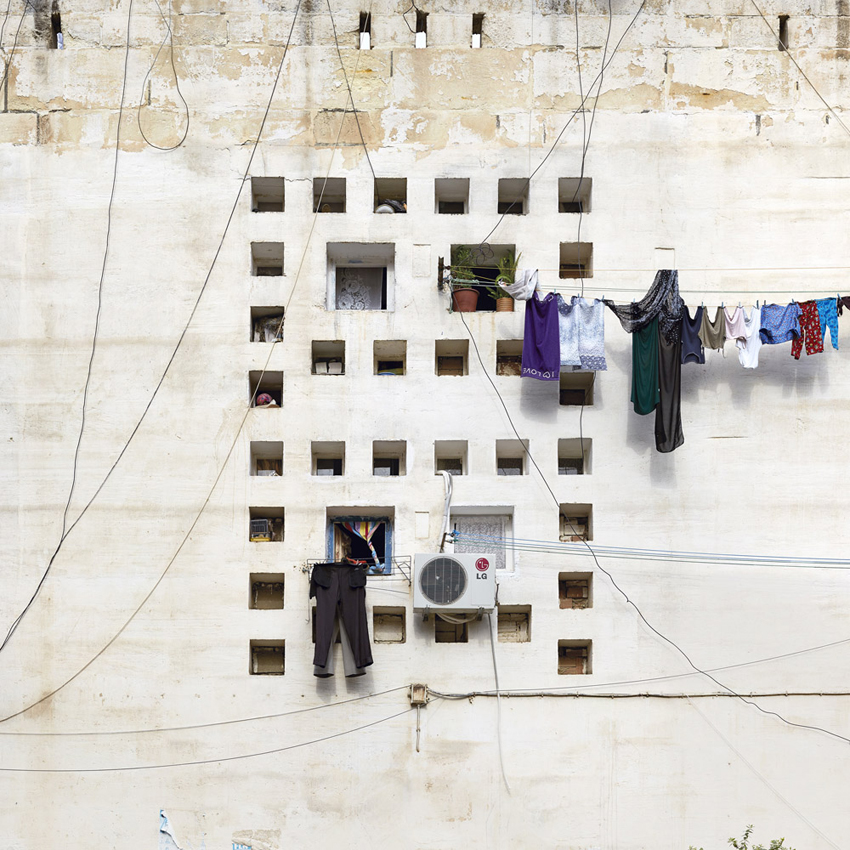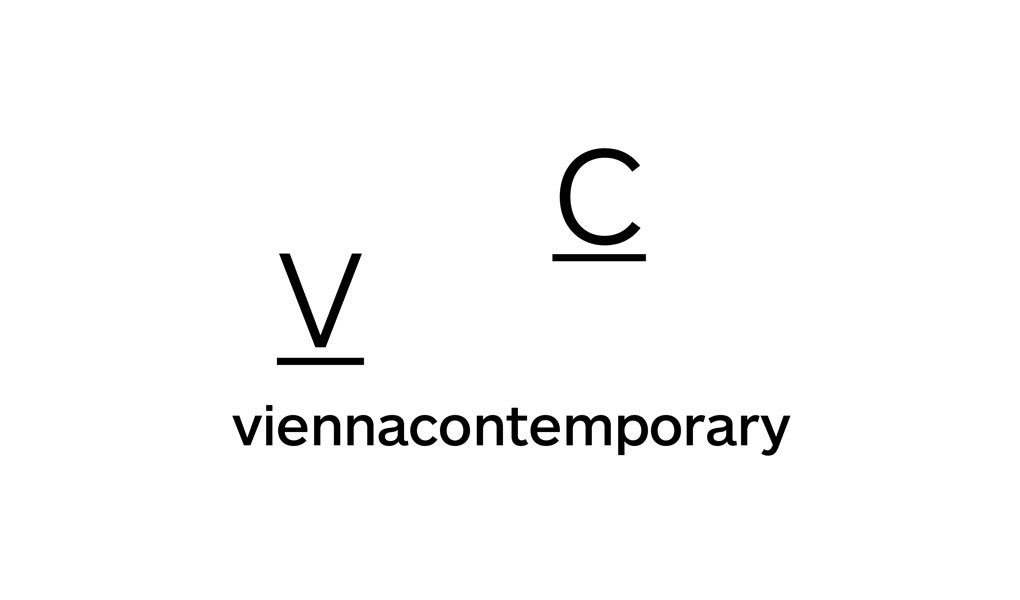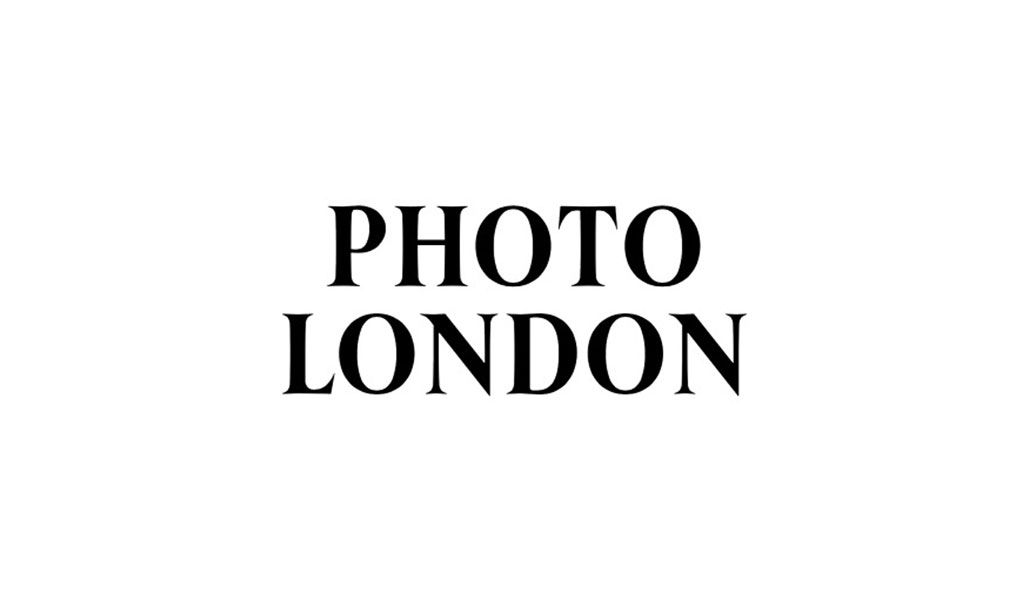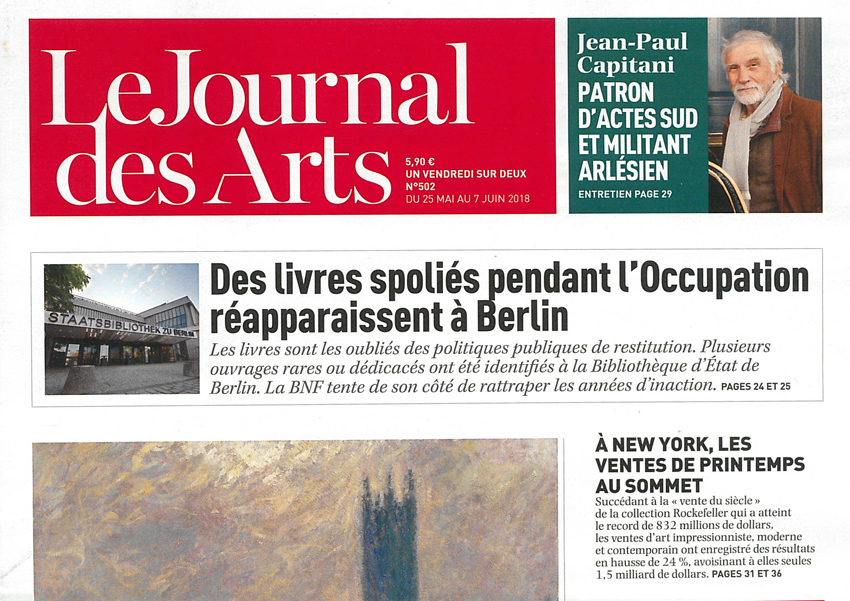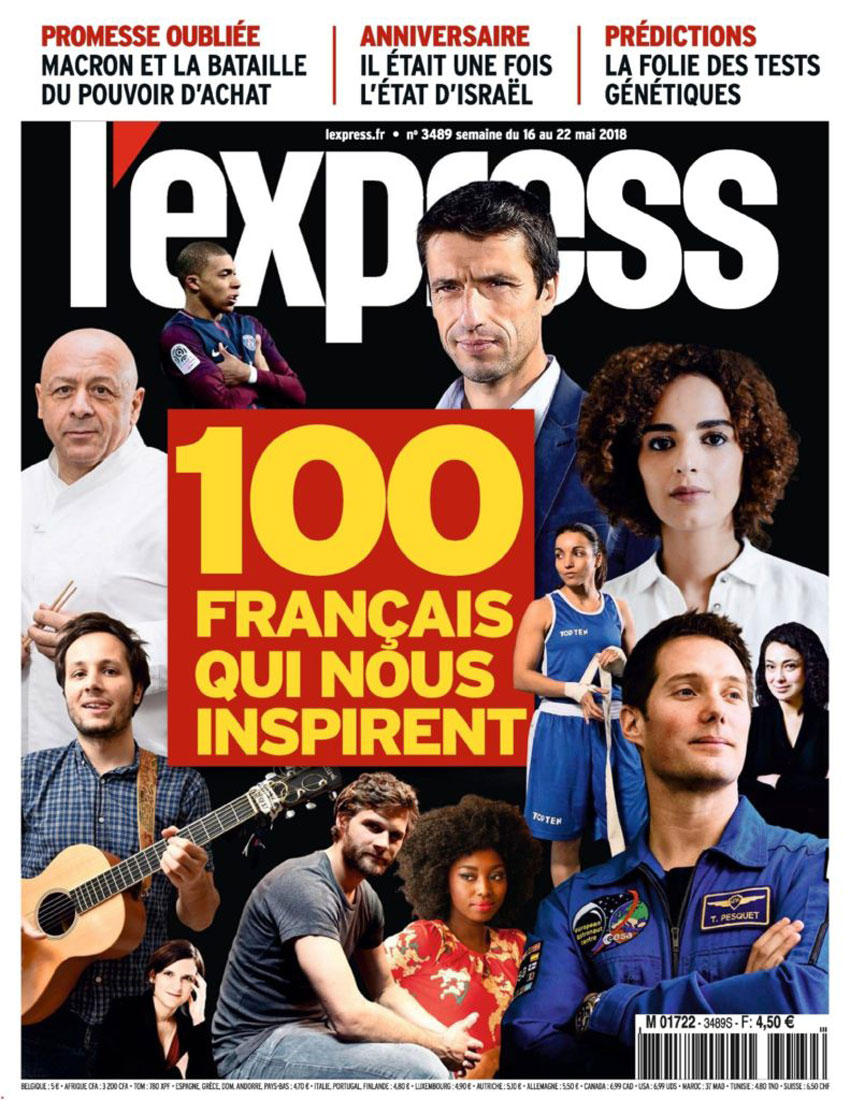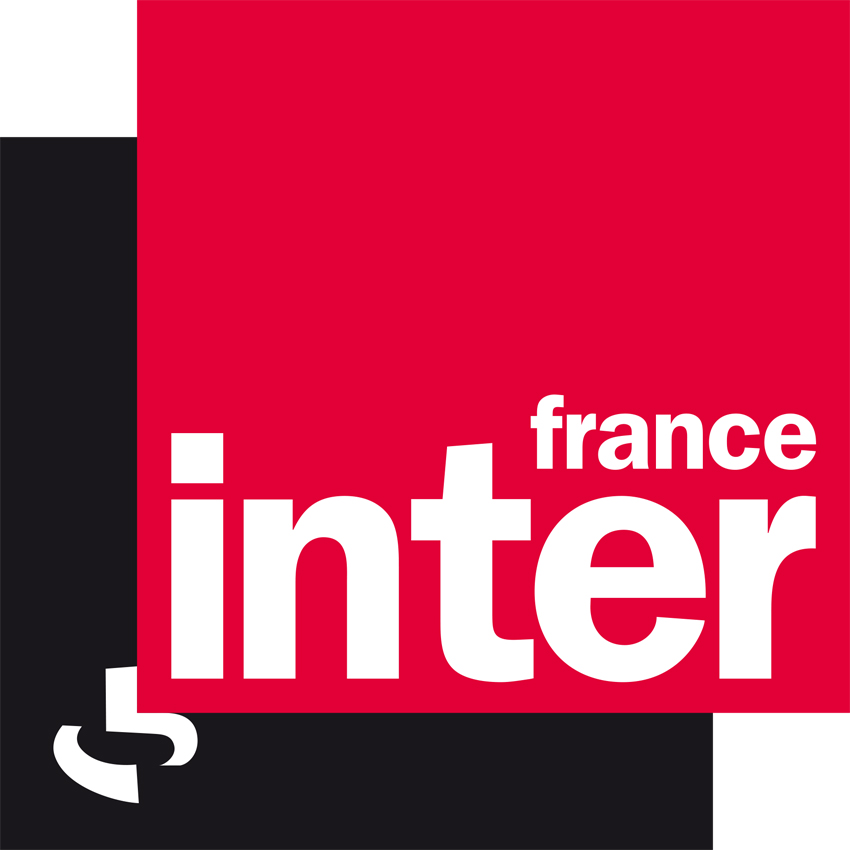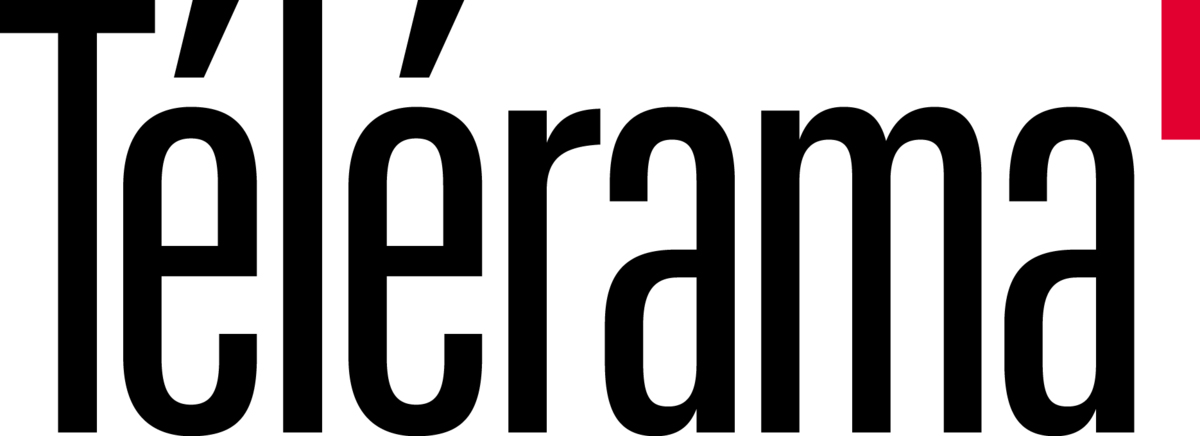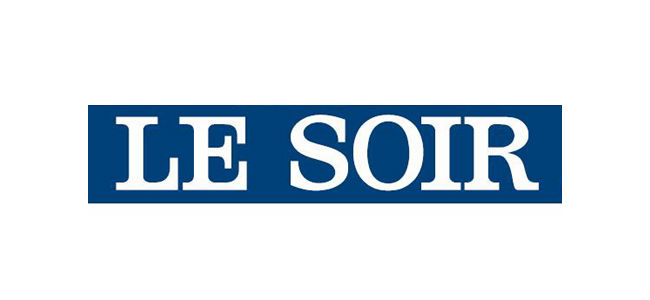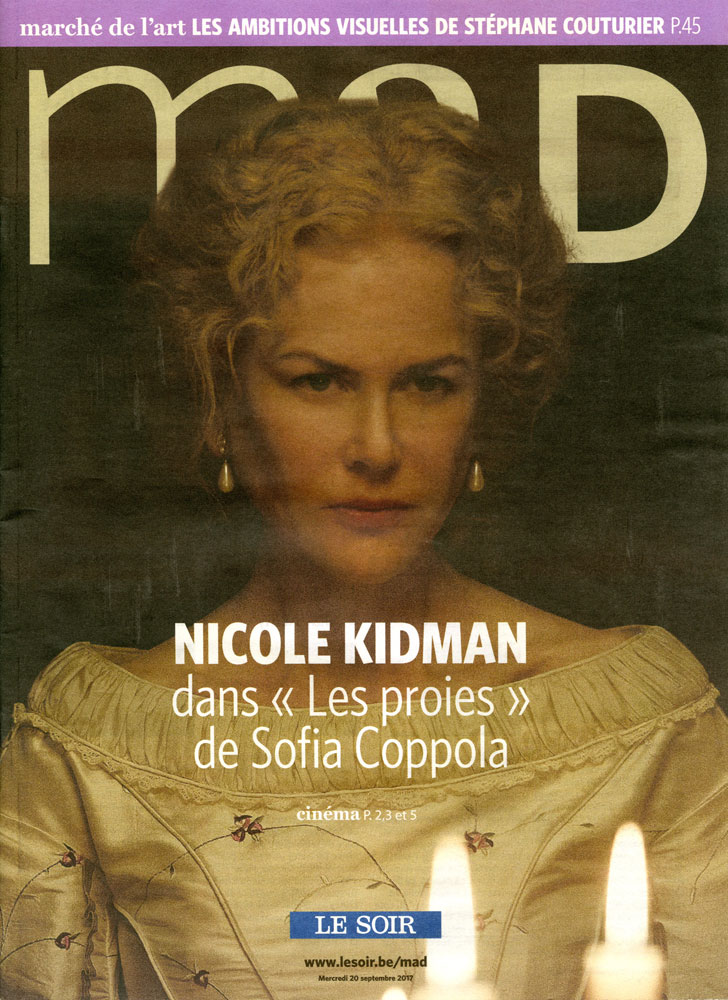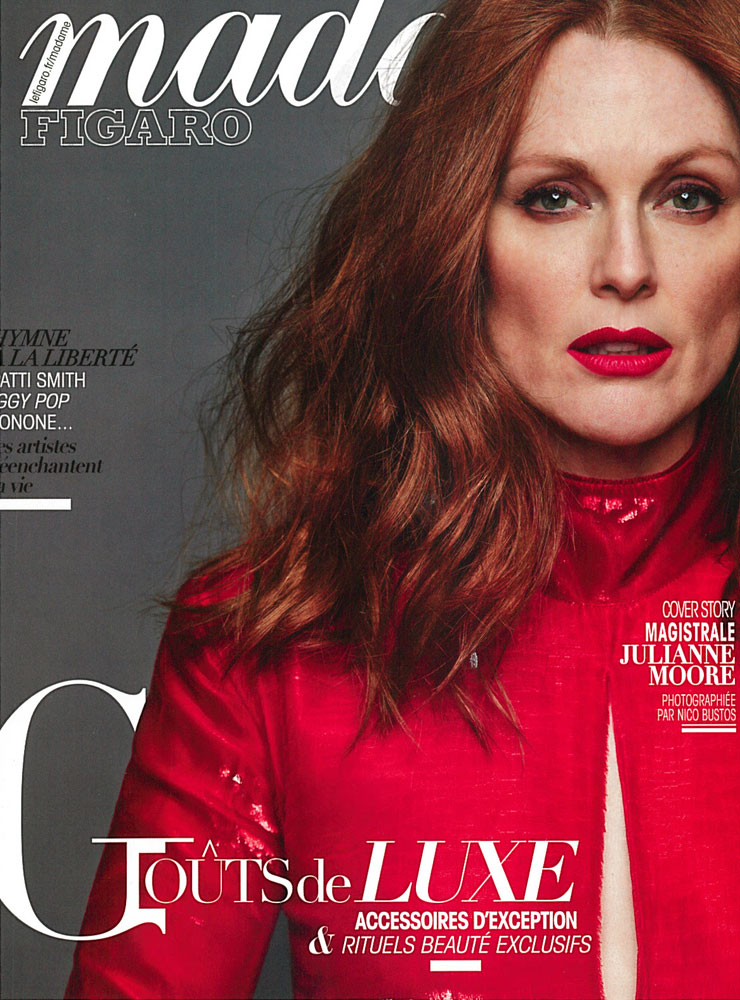
Edition of 8 + 2 Artist Proof
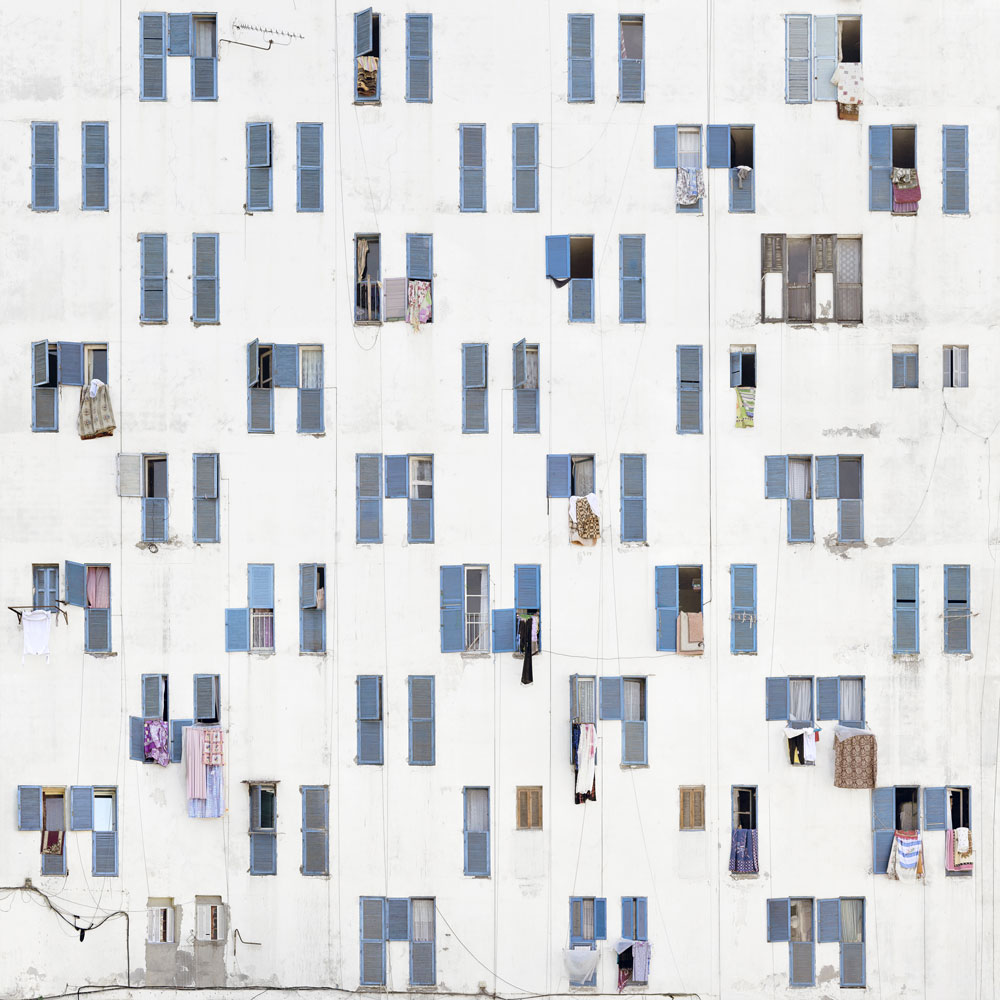
Edition of 5 + 2 Artist Proof
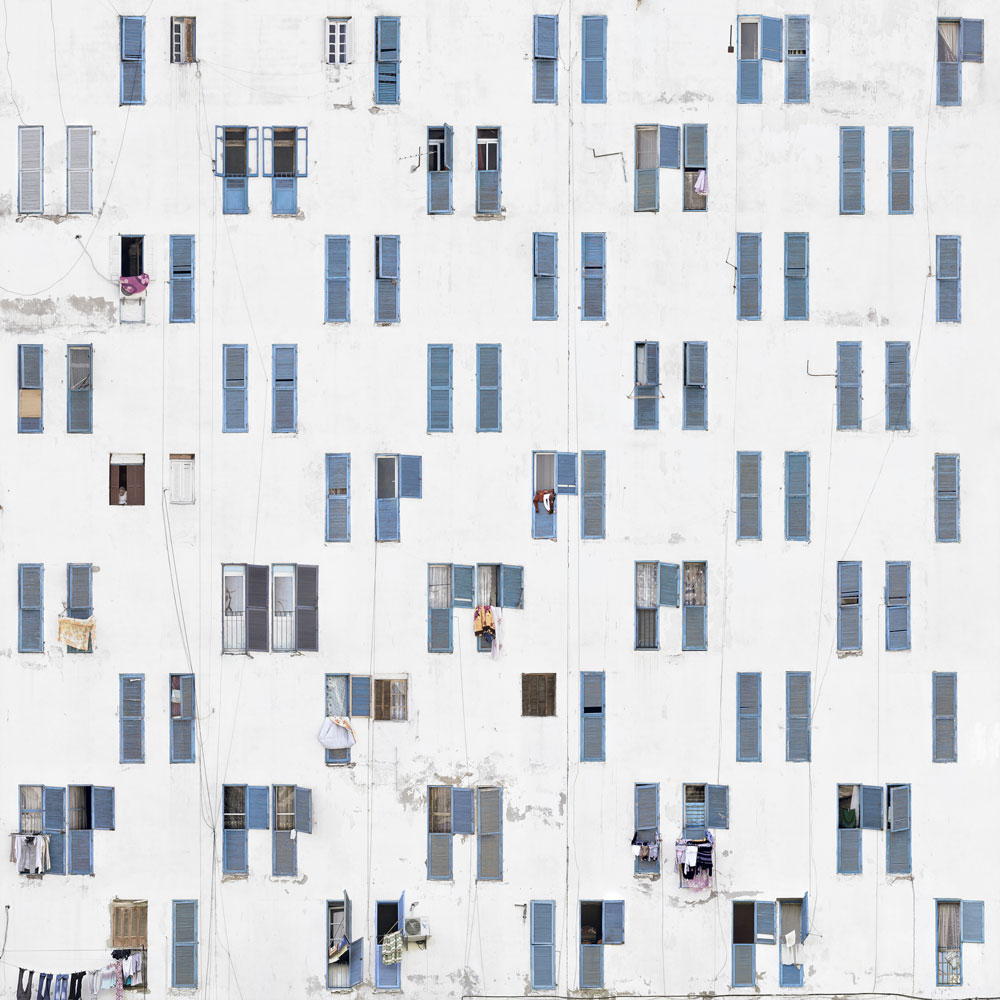
Edition of 5 + 2 Artist Proof
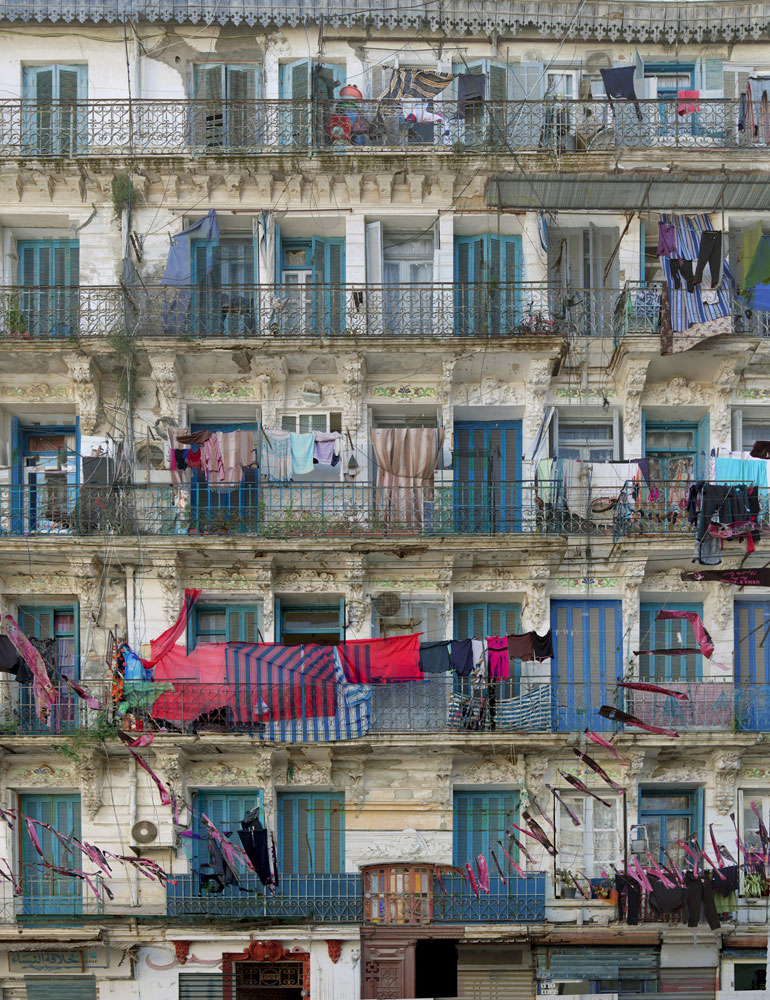
Edition of 5 + 2 Artist Proof
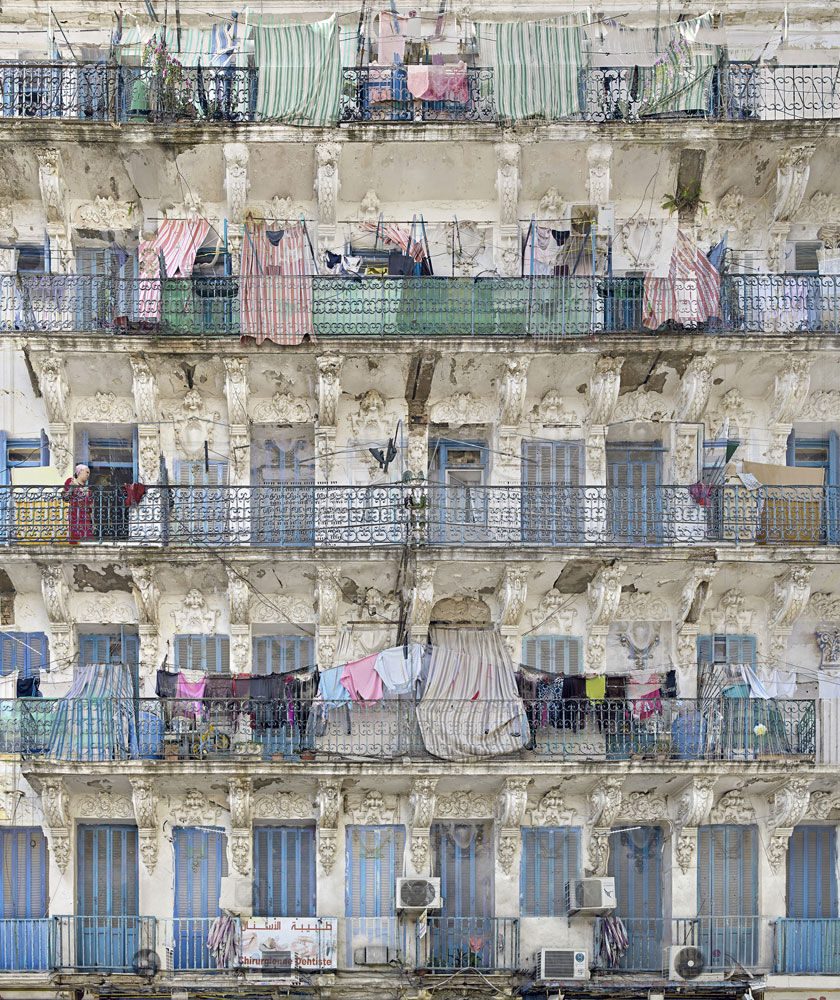
Edition of 5 + 2 Artist Proof
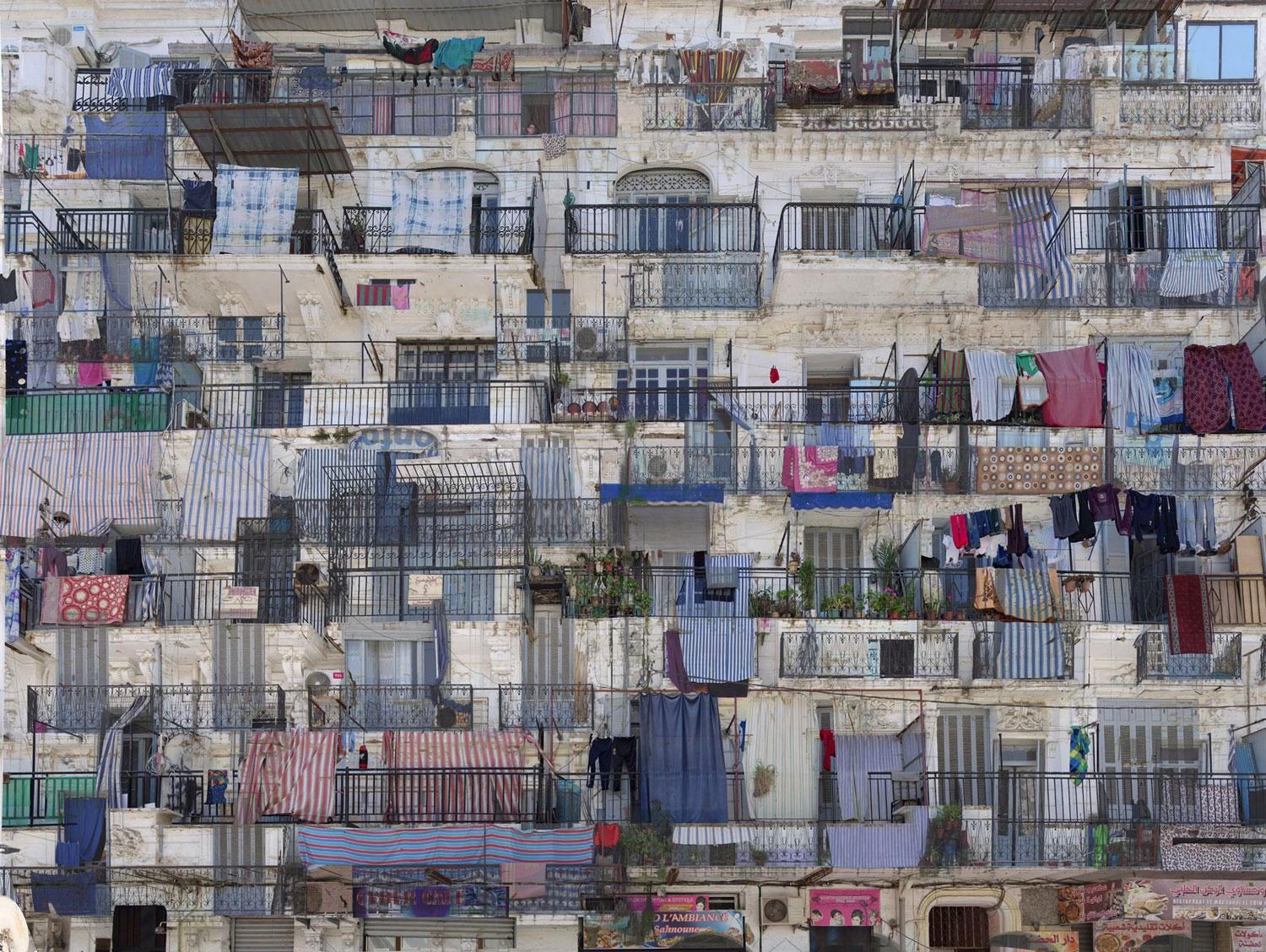
Edition of 5 + 2 Artist Proof
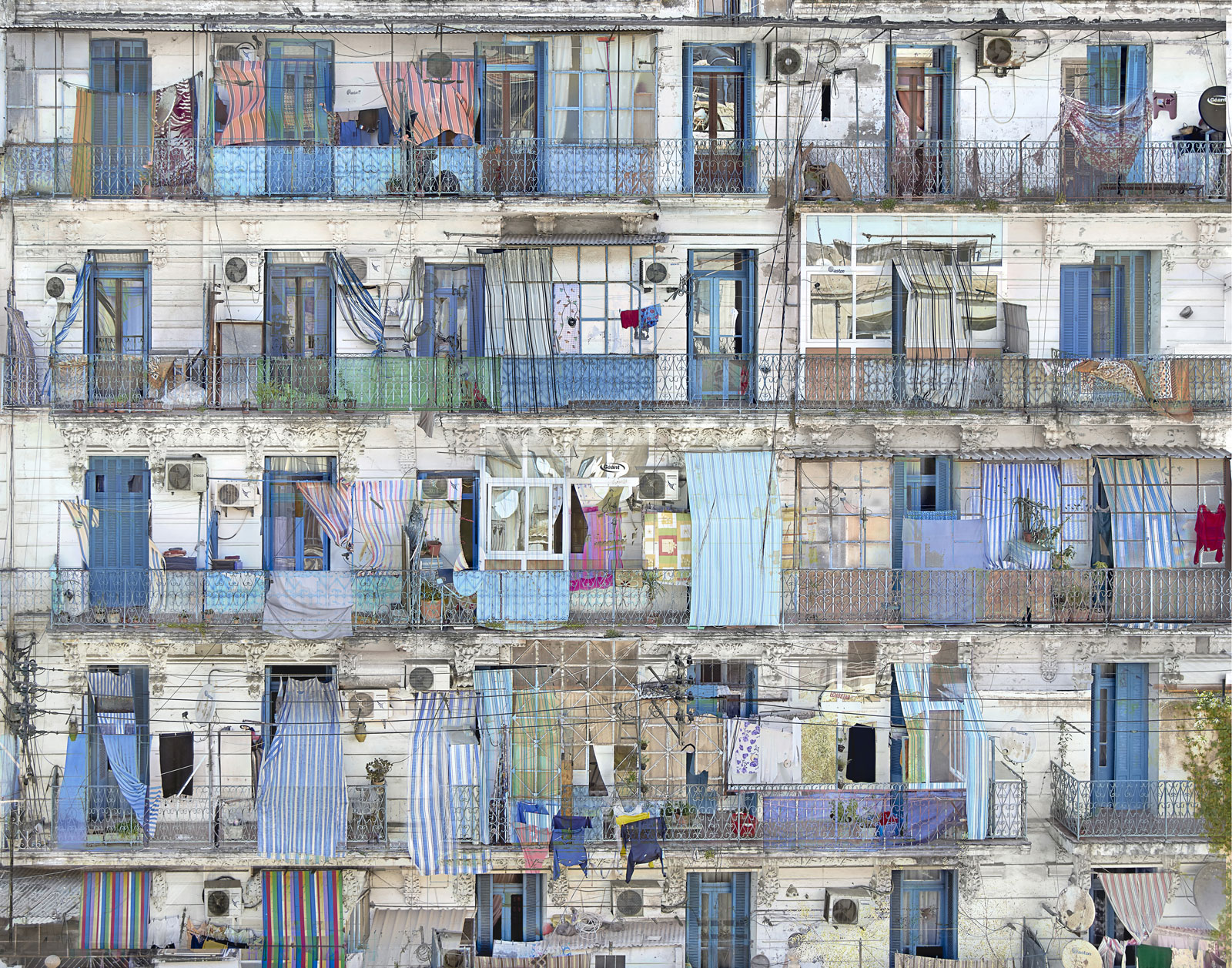
Edition of 5 + 2 Artist Proof
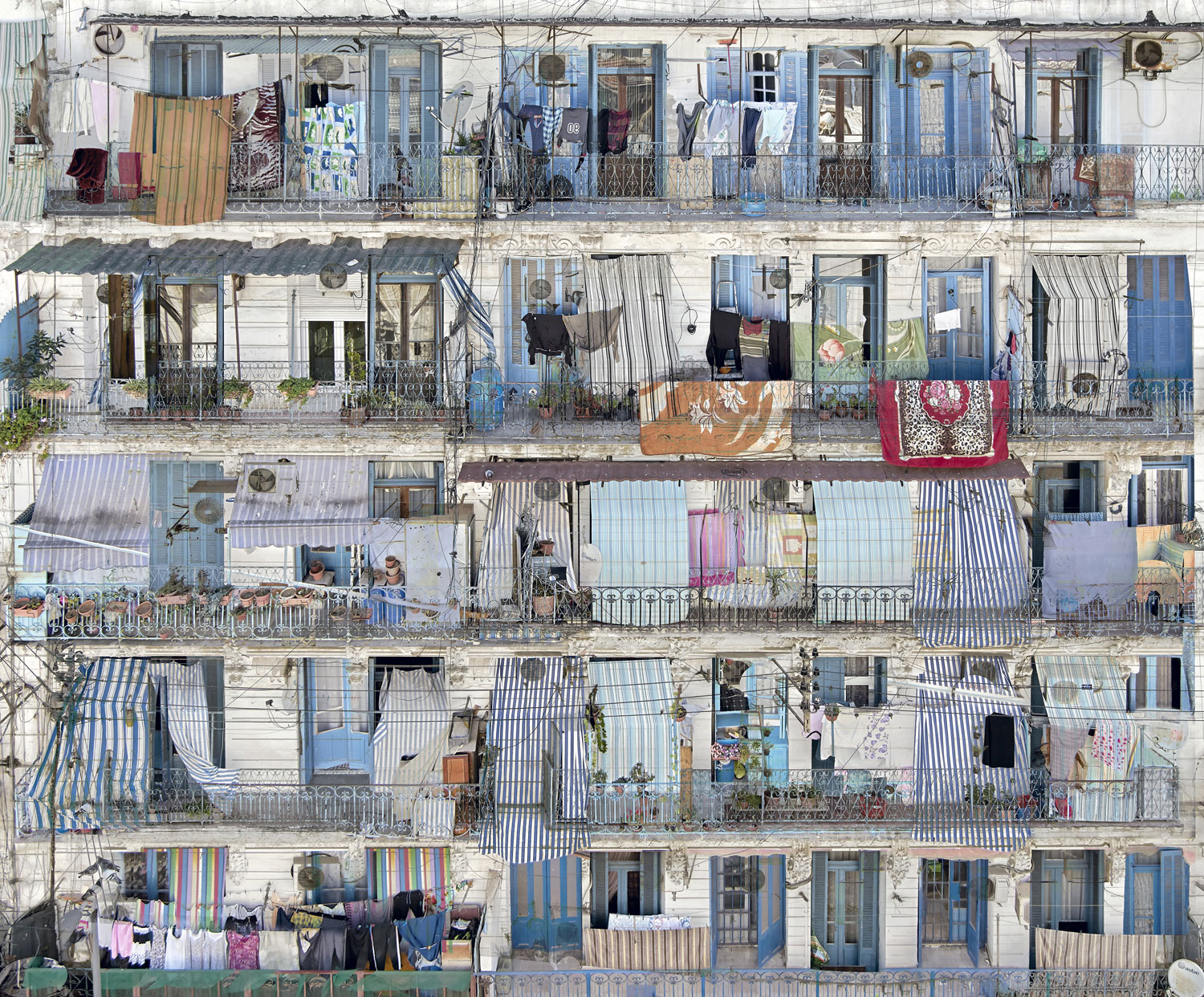
Edition of 5 + 2 Artist Proof
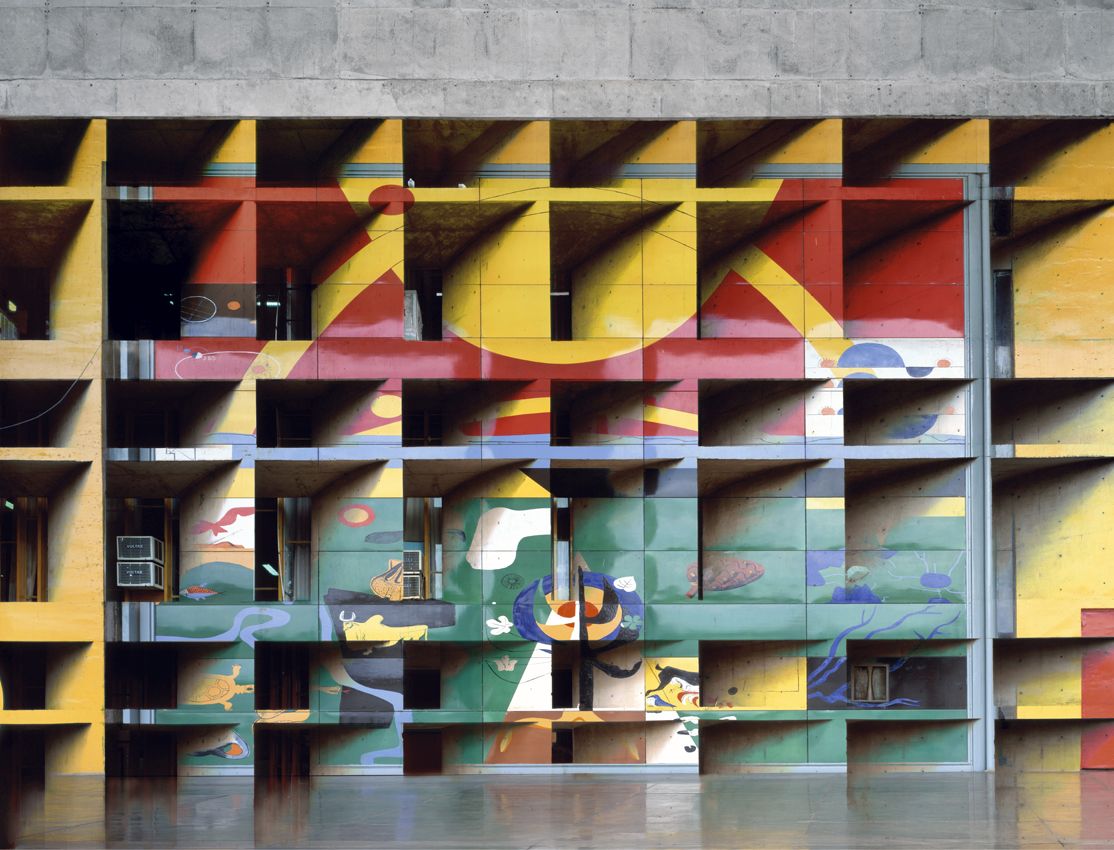
Edition of 5 + 2 Artist Proof
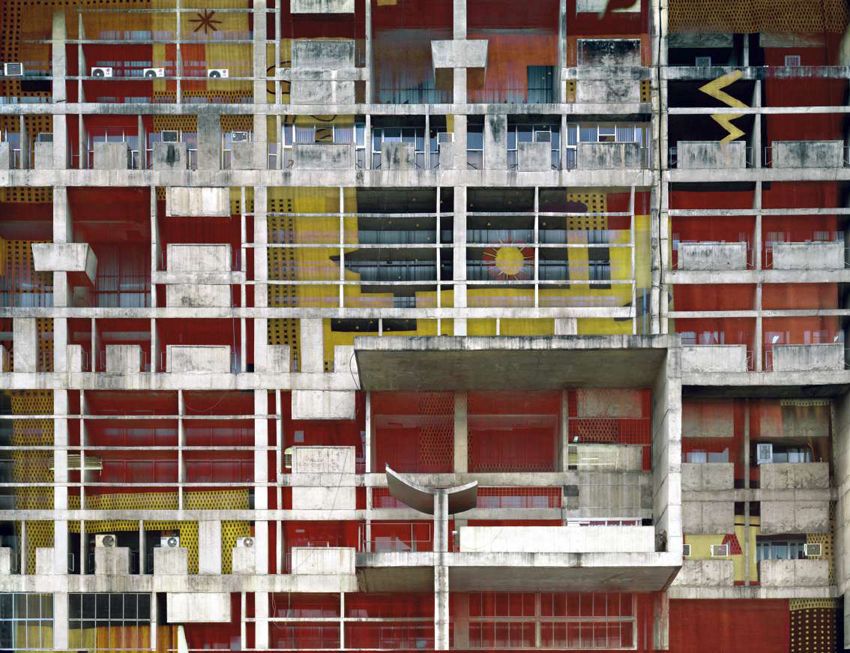
Edition of 3 + 2 Artist Proof
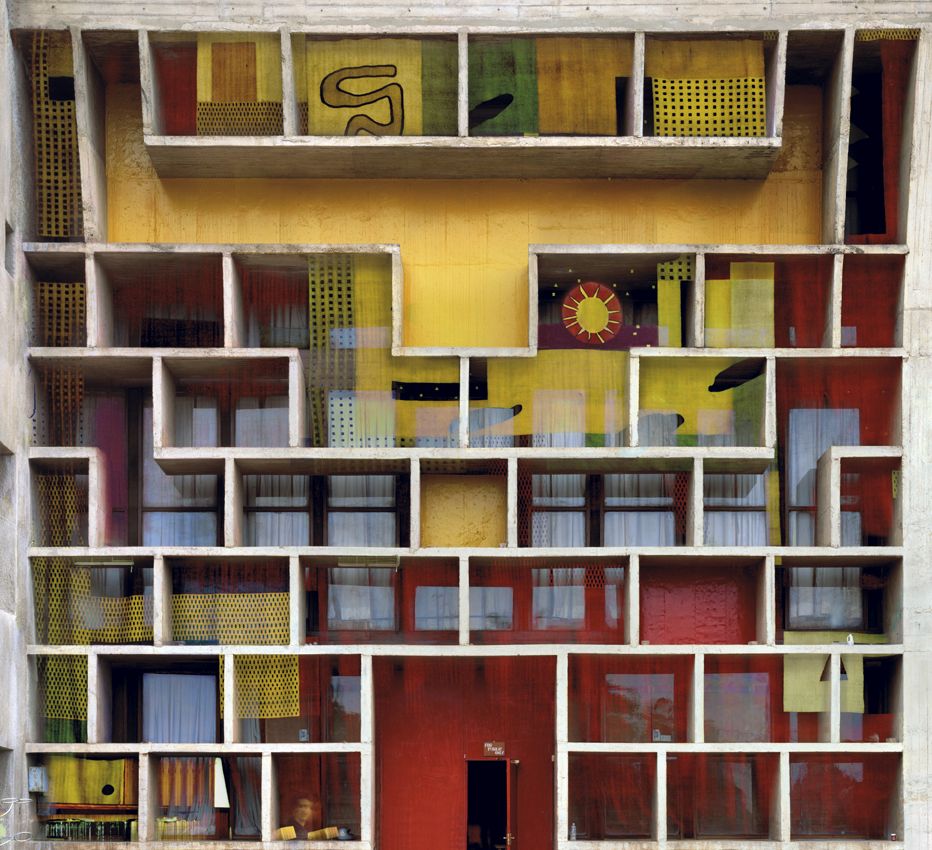
Edition of 3 + 2 Artist Proof

Edition of 8 + 2 Artist Proof
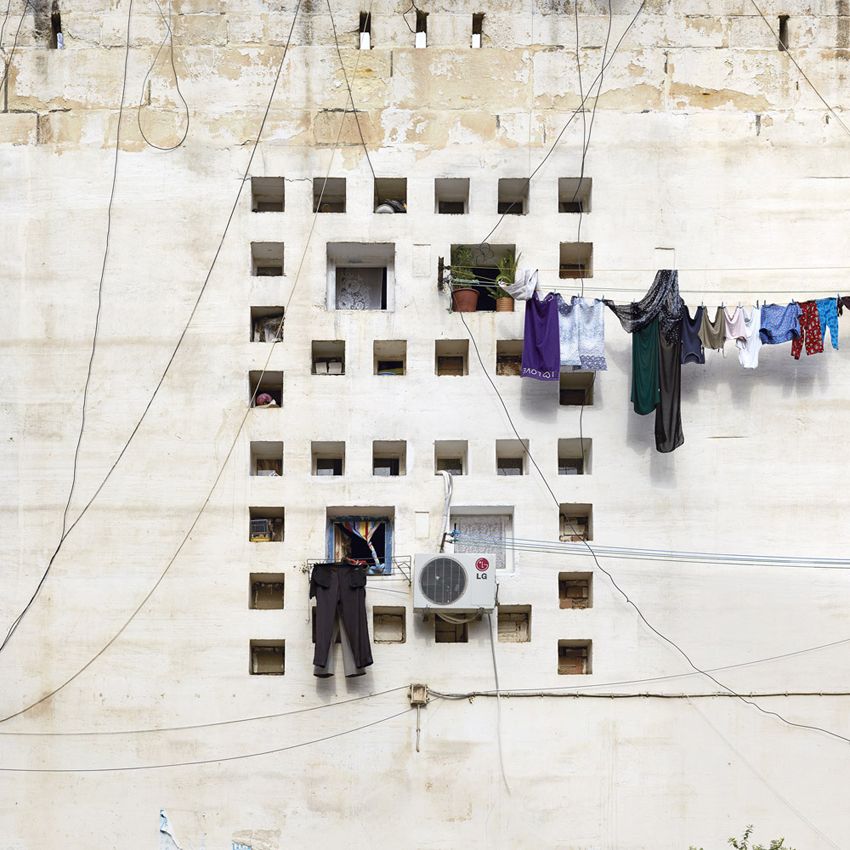
Edition of 5 + 2 Artist Proof
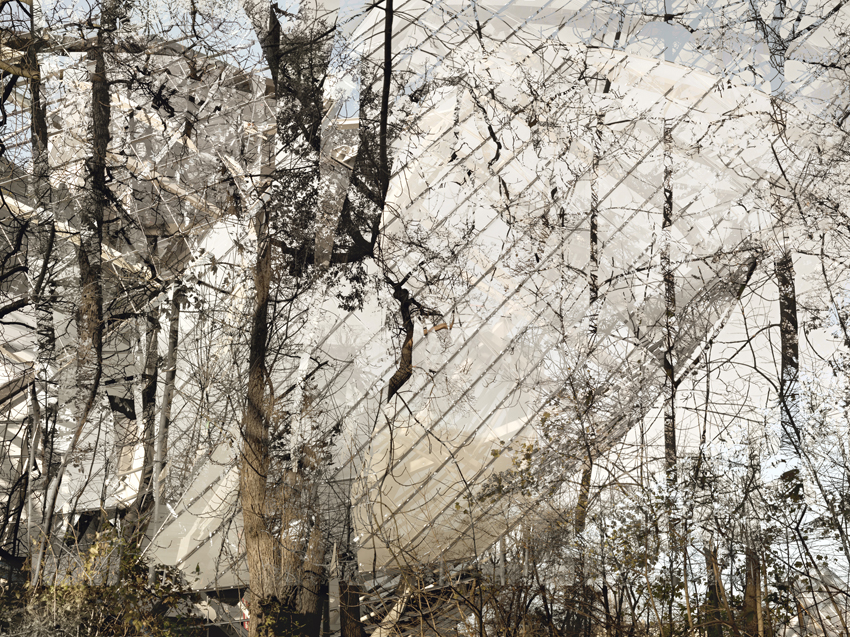
Edition of 5 + 2 Artist Proof
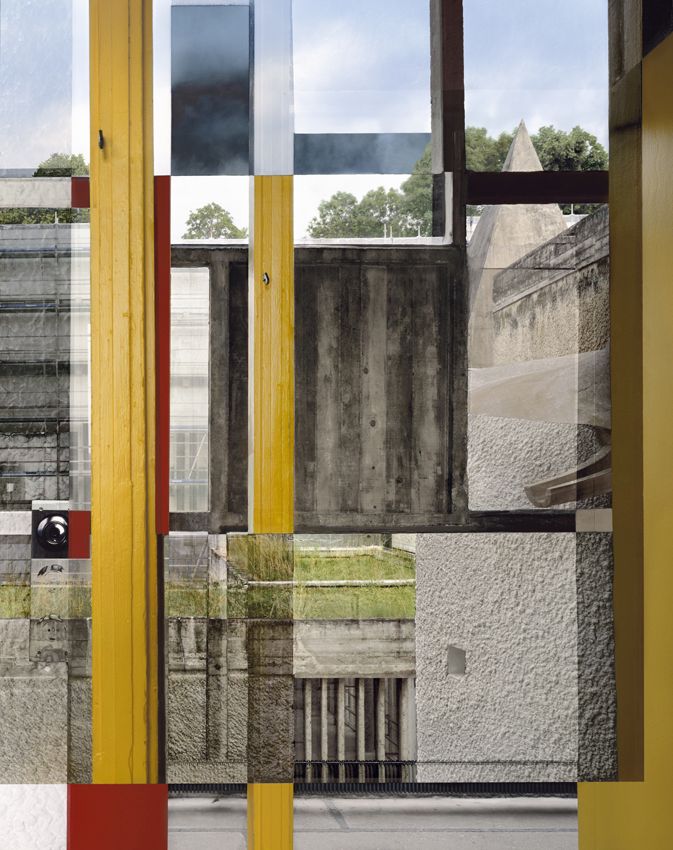
Edition of 5 + 2 Artist Proof
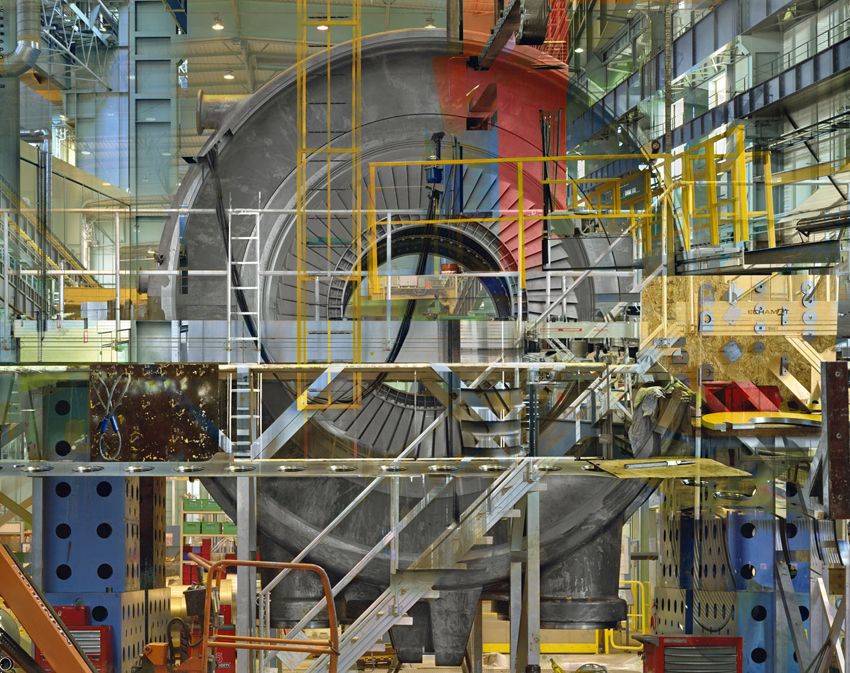
Edition of 5 + 2 Artist Proof
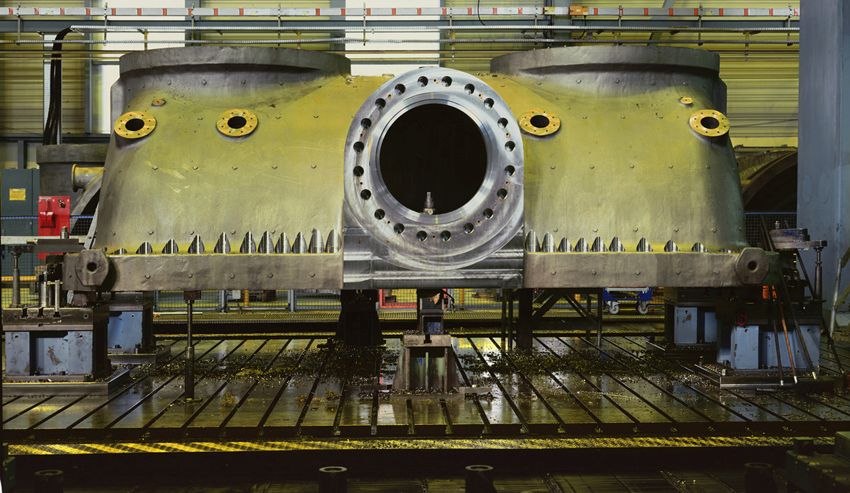
Edition of 3 + 2 Artist Proof
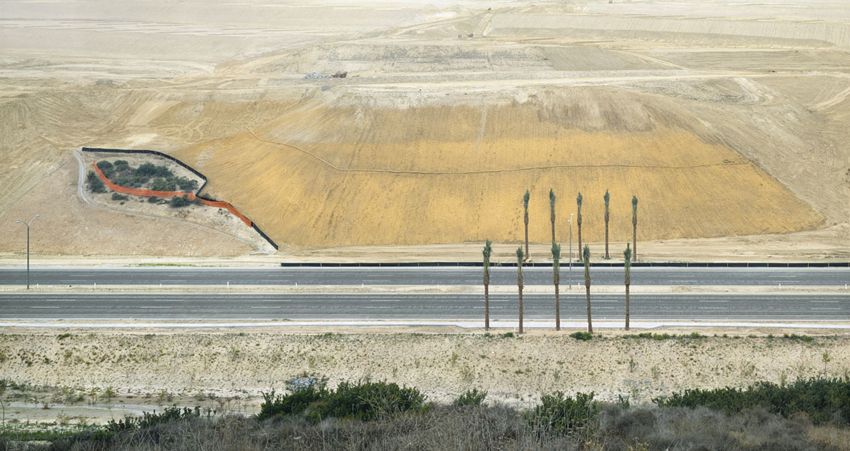
Edition of 5 + 2 Artist Proof
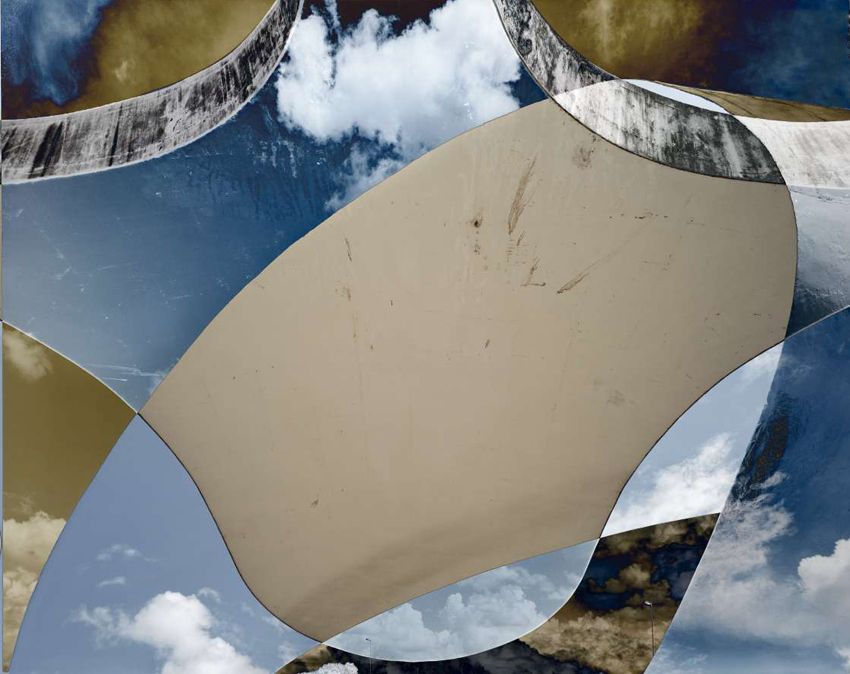
Edition of 5 + 2 Artist Proof
Presentation
Capturing the possible
Stéphane Couturier's photographs hinge on a Gordian knot: their hyperreal quality is inextricably entwined with a dissolution of form. This seemingly contradictory principle, at the heart of each of his pictures, is also a thread that runs through more than twenty years spent scrutinizing the surface of the visible, from the first series dedicated to abandoned industrial interiors, like the Renault factories in Boulogne-Billancourt (1993), to the organic and fluid volumes depicted in « Meltings », a series initiated in the mid 2000 that marks a shift in Couturier's work towards the digital, as well as beginning of his use of image editing software.
Whatever the subject, the surface of his images is teeming with details. Every fragment contains a seemingly infinite amount of textures. From urban spaces to deserted landscapes, from the steel innards of a factory to modernist architecture convolutions, we find ourselves facing a chunk of reality. And yet, when standing in front of those monumental prints, often man-sized, the eye is left to wander, disorientated, unable to focus on a single point. From the all-over treatment of the image, confusion is born. Whether it is conceived through the understanding of Roland Barthes punctum or through the Gestalt theory (1) as an anthropological notion, detail in Couturier's work does not endorse a regulatory function. It no longer gives cues on how to read the image, nor does it organize the internal whole of it. Detail becomes a system which brings about the dissolution of the composition's hierarchy, thus becoming an agent provocateur, a vector for the viewer's disorientation through the loss of his usual perceptual points of reference.
We find ourselves as if faced with a chunk of reality, and yet, what we see is beyond the real. Indeed, one of the trademarks of Stéphane Couturier's practice is to turn a technical necessity, the mediation of the device, into an ontology. The photographed, flattened world, disorientating in that it is not completely similar, nor entirely different, to the world that surrounds us and engulfs us, bears the mark of the camera eye. Walter Benjamin had already pointed this out: at the dawn of modernity, with the invention of the microscope and the telescope, devices such as these extend our senses, enabling to grasp the infinitely large and the infinitely small. From then on, this new gaze holds the potential of making familiar things seem peculiar when seen differently, reminding us that the natural human gaze is by no means the only way to perceive the world.
It is this aspect that Couturier strives to accentuate in his most recent works. Playing with the new possibilities of digital photography, he adds almost imperceptible visual incoherence by assembling and superposing two slightly displaced shots of the same subject. An attentive viewer will detect, here, a shadow cast in the opposite direction, there, a junction between two roads that only exists on the final image. His most recent series, "Climat de France", relies on this. It is named after a housing project built in Alger in Algeria at the end of the 1950s, in order to provide local population previously living in slums with housing. Today, it has turned into an estate saturated with overpopulation. It is a city within a city, almost autarkic, where inhabitants have reclaimed the architecture: today, the stiff original geometrical structure of the facade is broken by the presence of laundry, curtains and satellite dishes, while a variety of flimsy constructions are perched on top of the roof. In order to properly convey how tenuous is the modernist dream of order and control through architecture, Couturier puts aside the whole. Instead, he uses video-loops to film a long stride along corridors and photographs several fragments of the façade, assembled in a series that captures the essence rather than the full picture.
In "Climat de France", we are struck by one particular aspect: because of tight framing, the sky and the horizon are nowhere to be seen. This is another recurring feature of his work, also participating in breaking down hierarchization of the subject. Time and again, Couturier's images show us a hybrid reality, somewhere between nature and culture. The scenery always bears witness of human occupation, but the humans themselves have left the premises: of their presence remain only memorial strata and ruins, that seem to now lead a life of their own, in a quasi-organic way. Even when portraits appear, as it in the case in "Climat de France", it remains a one-shot. And indeed, the inhabitants portrayed here seem to have become one with the walls they haunt, in that in the artist's work, walls are already individualized and treated with the same attention to detail demanded by portraying human beings.
Through this procedure, the arbitrary and anthropocentric divide between things and beings is blurred. This opposition, as pointed out by Bruno Latour (2), is a trick played by thinkers of modernity, who wrongly thought they could impose a separation between reigns, taking no notice of the proliferation of hybrid components which, today, we simply cannot continue to ignore. In the midst of those big chunks of reality shown by Couturier, the divide is no opposition anymore: this mixed reality is driven by variations in intensity. Beyond objet and subject, it is instead, as pointed out by Graham Harman, a philosopher theorizing an Object Oriented Ontology, "a deeper, threefold interaction, that which plays between the object and its accidents, its relations and its qualities" (3). In this regard, Couturier's photographs, with their hyperrealist quality as well as their rendering of a hybrid reality, provide us with a model for a new way of seeing. Faced with those photographs, we need to learn how to perceive again. Not to see, but to perceive: there is, indeed, nothing to look for, nothing to identify, but a totality to embrace. To acknowledge this totality as the "articulate proliferation" of forms, textures and materials already identified by Matthieu Poirier (4) is to experience a conversion of our usual perception.
This ontology goes hand in hand with a new conception of the photographic medium itself. Indeed, photography tends to be conceived through its referential character only. To avoid this restrictive conception, Couturier, since his first works, has always claimed his wish to go beyond the antagonism between documentary photography and the French tradition of fine arts photography called "photographie plasticienne". Instead, he wishes to consider the photograph as a « thought object ». Refusing to give in to any medium determinism, he mixes analogue and digital processes: photography is a way of recording the fictional. The minute recording that it enables does not longer serve as a proof for anything. Instead, it invents new worlds, worlds that could be, while still showing us the ones that are. Those are brought about by the change of perspective induced by the mechanical eye of the photographical device, and then accentuated by the choice of modular compositions. This vision, the mechanical one, is not more or less neutral than the human one: it merely is, and coexists with ours. By multiplying perspectives, photography bears witness of how fiction can go hand in hand with knowledge, describing the real all while it reinvents it.
Ingrid Luquet-Gad
(1) According to Gestalt theory or form psychology, we first perceive the global shape of a form before being able to distinguish the different juxtaposed parts from which it is made of.
(2) Bruno Latour, Nous n'avons jamais été modernes, Paris, 1997 (1991), La Découverte, Paris, p. 23. « Modernity is often defined through humanism (...) It forgets the joint birth of both the "non-human", that of things, or objects, or animals, anf that, no less strange, of an infinitely remote and ruled out God. Modernity arises from the joint creation of those three entities, and then from covering it up, each community treated separately, all while, down under, hybrids proliferate, under the very influence of this separeted treatment. It is this twofold separation that must be rebuilt (...) ».
(3) Graham Harman, Towards Speculative Realism. Essays and lectures, Hants, 2010, Zero Books, p. 147.
(4) Matthieu Poirier, « Morpho-logies », in Stéphane Couturier, Photographies, Paris, 2005 (2004), L'Insolite, p. 8.
Agenda
06.05.2017 - 10.09.2017
20.04.2017 - 24.09.2017
25.11.2015 - 25.11.2015
Biography
Born in 1957. Lives and works in Paris.
Niépce Prize 2003.
SOLO EXHIBITIONS (SELECTION)
2018
- Photographic command, ImageSingulières festival, Festival Photo La Gacilly and musée Fernand Léger, at Sète, La Gacilly and Biot
2017
- Musée de la Photographie - Charleroi, Belgium
- Galerie Kornfeld - « So far So close » - Berlin
- Artothèque - « Alger, Climat de France » - Caen, France
- ArTsenal, centre départemental d’art contemporain
- Rétrospéctive - Dreux, France
- «Alger la Blanche», La Galerie Particulière, Bruxelles
2016
- « Alger, Climat de France », Musée Nicéphore-Niépce, Chalon-sur-Saône
- La Galerie Particulière, Paris
2015
- Maison Européenne de la Photographie, Paris
- Kornfeld Gallery, Berlin, Germany
2014
- « Climat de France », Galerie Michel Journiac, University Paris 1 Panthéon-Sorbonne, Paris
- « Alger - Climat de France », Hôtel des Arts, Toulon
- « Melting Point », Institut Français, Fukuoka, Japan
2013
- « Melting Point series », Bildmuseet, Umea, Sweden
- « Mutations », Espace Louis Vuitton, Hong-Kong
2012
- « Melting Point series », Kornfeld Gallery, Berlin, Germany
- « Archéologie Urbaine - Paris-Berlin », Institut Français, Berlin, Germany
- « Stéphane Couturier, Photographie et Vidéo », Christophe Guye Gallery, Zürich, Switzerland
- Théâtre de la Photographie et de l'image, Nice
- « Stéphane Couturier : Photographie et Vidéo », Salomon Foundation, Annecy
- « Melting Point series », Nordin Gallery, Stockholm, Sweden
- « Melting Point series », Landesgalerie, Linz, Austria
GROUP EXHIBITIONS
2018
- « La Beauté des Lignes. Chefs d'oeuvre de la collection Gilman & Gonzalez-Falla », Musée de l'Élysée, Lausanne, Switzerland
- « La Photographie française existe, je l'ai rencontrée », curated by Jean-Luc Monterosso, Maison européenne de la photographie, Paris
- « Paysages Français, une aventure photographique 1984-2017 », Bnf François Mitterrand, Paris
2017
- « Horizons », Abbaye de la Celle, Var
- « Agoramania », MAIF Social Club, Paris
- « AutoPhoto », Fondation Cartier pour l’art contemporain, Paris
- « You Want Truth or Beauty ? », Kunsthalle Nexus, Saalfelden, Austria
- « Supper Club », Galerie Kornfeld, Berlin
2015
- « Villes Africaines en Mouvement », AS.Architecture-Studio / CNAP, Venice Biennale, Italia
- « 20.000 lieux : Voyage dans les collections de la Société Générale et du LAAC », LAAC, Dunkerque
- « Les Euronautes », Kornfeld Gallery, Berlin, Germany
2014
- « Paris Champ & Hors Champ », Galerie des bibliothèques, BHVP, Paris
- « Regards contemporains de photographes, Couvent de la Tourette, Le Corbusier », Le Cloître Ouvert, Paris
- « S'il y a lieu je pars avec vous », Le BAL, Paris
- « Collection 5 », Galerie Claire Gastaud, Clermont-Ferrand
- « The sea is my land », Triennale, Milan, Italia
- « How long is now », Haus der Fotografie, Burghausen, Germany
- « Une photographie sous tension, la collection de Florence et Damien Bachelot », Musée Nicéphore Niépce, Chalon-sur-Saône
- « Architecture(s) », Arthotèque de Vitré
2013
- « Pièces montrées », FRAC Alsace at Fernet-Branca Foundation, Saint Louis (France)
- « L'Oeil Photographique », Frac Auvergne / CNAP, Clermont-Ferrand
- « La France : essai de portrait photographique », 15th Photographic Art Exhibition, Lishui, China
- « How long is now », Foto-Raum, Vienna, Austria
- « Little Boxes - Photography and the suburbs », LACMA, Los Angeles, USA
- « Awakening, where are we standing, place, memory, resurrection », AICHI Triennale, Japan
- « The sea is my land », Maxxi, Rome, Italia
- « The Festival d'Avignon : Centre National des Arts Plastiques State commission 2010-2011 », Rencontres d'Arles at Cloitre Saint Trophime, Arles
- « Les choses de ce côté du monde », MuCEM opening exhibition during Marseille-Provence 2013, Marseille
- Biennale photographique de Sedan
- « Construire l'image, Le Corbusier et la photographie », CIVA, Brussels, Belgium
- « Une partie de campagne », Saint-Émilion
- « De Sculptura », Salzburg Museum, Salzburg, Austria
- « Landmark : The Fields of Photography », Somerset House, London, England
2012
- « Melting Point Series », Institut Français in Kansai (during the Nuit Blanche), Kyoto, Japan
- « De Paso en la Tierra: 45 french and spanish artists », Institut Français, Madrid, Spain
- « Le Corbusier et la photographie », Musée des Beaux-Arts, La Chaux de Fonds
- « Des Architectures », Galerie Gourvennec-Ogor, Marseille
- « Man Made Color », Laurence Miller Gallery, New York, USA
- Espace Culturel des Dominicaines, Pont-L'Évêque
- « Où donc, et quand ? » A selection of works from FRAC Bourgogne and FRAC Franche-Comté, Centre d'Art de l'Yonne, Château de Tanlay
- « Babel », Palais des Beaux-Arts, Lille
- « Make up » A selection of works from the CAPC and the Société Générale, CPAC, Bordeaux
MONOGRAPHS
2018
- Sète#18 Stéphane Couturier, text by Christian Caujolle, Le Bec en l'air édtions
2016
- Stéphane Couturier, Éditions Xavier Barral
2015
- SC, Éditions Loco
2014
- Alger, Climat de France, Arnaud Bizalion Éditeur
2012
- Stéphane Couturier, Photos et Vidéos, éd. Fondation Salomon
2010
- Melting Point Continued, Fotohof Editions
2009
- Melting Power Alstom, catalogue d'exposition, Belfort
2008
- Melting Point, catalogue d'exposition, Tarragona
2007
- Chandigarh Replay, Éditions Ville Ouverte
2006
- Melting Point, Éditions Ville Ouverte / Transphotographic Press
2004
- Stéphane Couturier, Photographies, Éditions Adam Biro
- Stéphane Couturier, Mutations, Éditions Bibliothèque Nationale de France
2002
- Landscaping, Éditions Ville Ouverte
AWARDS
- Niépce Prize 2003
TEXTS (SELECTION)
- Quentin Bajac, "Chandigarh Replay" in Chandigarh Replay, Éditions Ville Ouverte, 2007
- André Rouillé, "Melting Point" in Melting Point, Éditions Ville Ouverte / Transphotographic Press, 2006
- Régis Durand, "Opposite Attractions" in Artpress n°214, June, 1996
COLLECTIONS (SELECTION)
AUSTRIA
- Landes Museum, Linz
BELGIUM
- Musée de la Photographie de Charleroi, Charleroi
- Fondation Lhoist, Limelette
BRASIL
- Museu Nacional da Republica, Brasilia
CANADA
- National Gallery of Canada, Ottawa
FRANCE
- Centre Georges Pompidou, Paris
- Assemblée Nationale, Paris
- Maison Européenne de la photographie, Paris
- Musée d'Art Moderne et Contemporain de Strasbourg
- Musée des Beaux-Arts de Belfort
- Musée Carnavalet, Paris
- Musée de La Roche-sur-Yon
- Musée du Petit Palais - Musée des Beaux-Arts, Paris
- Fonds National d'Art Contemporain, Puteaux
- Cabinet des Estampes - Bibliothèque Nationale, Paris
- FRAC Alsace, Sélestat
- FRAC Auvergne, Clermont-Ferrand
- FRAC Franche-Comté, Besançon
- Fondation NSM, Paris
GERMANY
- Deutsche Bank, Frankfort
- Musée d'Art Contemporain de Brême, Bremen
ISRAEL
- Israel Museum, Jerusalem
LUXEMBOURG
- Banque et Caisse d'Épargne de l'État, Luxembourg
- Grand-Duc Jean Museum, Luxembourg
- Musée d'Art Moderne Grand-Duc Jean, Luxemburg
SWITZERLAND
- Musée de l'Élysée, Lausanne
THE NETHERLANDS
- Caldic Collection, Rotterdam
- De Pont Foundation, Tilburg
- Erasmus MC, Rotterdam
- Gemeentemuseum, The Hague
- Huis Marseille, Amsterdam
- Randstad Nederlands, Amsterdam
UNITED-STATES
- Art Institute of Chicago, IL
- Cleveland Art Museum, Ohio
- Goldman Sachs, NYC, NY
- LaSalle National Bank, Chicago, IL
- Los Angeles County Museum, CA
- Lowe Art Museum, Coral Gables, FL
- Museum of Photographic Arts, San Diego, CA
- National Gallery, Washington, DC
- Progressive Corporation, Cleveland, OH
- Saint-Louis Museum, MO
- Santa Barbara Museum of Art, California
- Spencer Museum of Art, University of Kansas, KS
